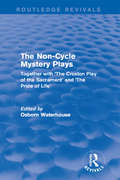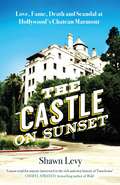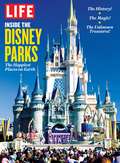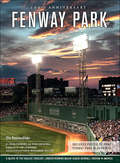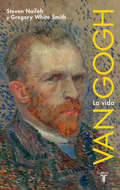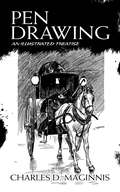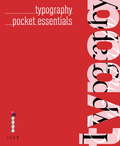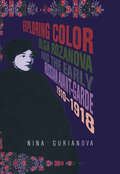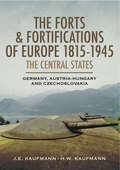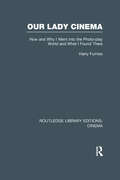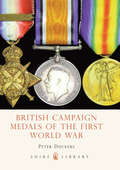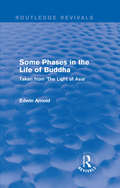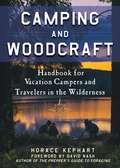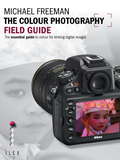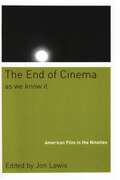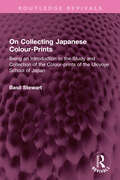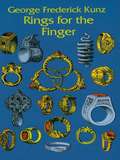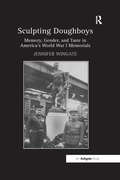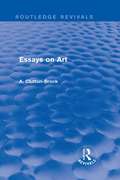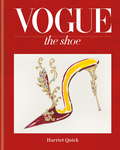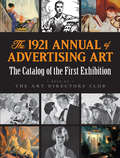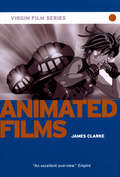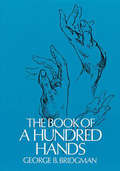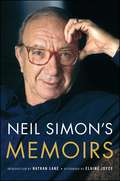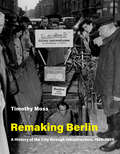- Table View
- List View
The Non-Cycle Mystery Plays: Together with 'The Croxton Play of the Sacrament' and 'The Pride of Life' (Routledge Revivals)
by Osborn WaterhouseBetween the beginning of the tenth and the end of the sixteenth centuries, in all parts of Great Britain from Aberdeen to Cornwall, performances of liturgical and mystery plays are on record. This book, first published in 1909, is a collection of early-English religious plays with a detailed introduction written by the editor Osborn Waterhouse. The Non-Cycle Mystery Plays will be of interest to students of drama, performance and theatre studies.
The Castle on Sunset: Love, Fame, Death and Scandal at Hollywood's Chateau Marmont
by Shawn LevyFor nearly ninety years, Hollywood's brightest stars have favoured the Chateau Marmont as a home away from home. Filled with deep secrets but hidden in plain sight, its evolution parallels the growth of Hollywood itself. Perched above the Sunset Strip like a fairy-tale castle, the Chateau seems to come from another world entirely. An apartment-house-turned-hotel, it has been the backdrop for generations of gossip and folklore: 1930s bombshell Jean Harlow took lovers during her third honeymoon there; director Nicholas Ray slept with his sixteen-year-old Rebel Without a Cause star Natalie Wood; Anthony Perkins and Tab Hunter met poolside and began a secret affair; Jim Morrison swung from the balconies, once nearly falling to his death; John Belushi suffered a fatal overdose in a private bungalow; Lindsay Lohan got the boot after racking up nearly $50,000 in charges in less than two months. Much of what's happened inside the Chateau's walls has eluded the public eye - until now. With wit and prowess, Shawn Levy recounts the wild parties and scandalous liaisons, creative breakthroughs and marital breakdowns, births and untimely deaths that the Chateau Marmont has given rise to. Vivid, salacious and richly informed, the book is a glittering tribute to Hollywood as seen from the suites and bungalows of its most hallowed hotel.
LIFE Inside the Disney Parks: The Happiest Places on Earth
by The Editors of LIFEWalt Disney spent his life dreaming impossible dreams, and achieved the most impossible dream of all - the amusement park to end all amusement parks: Disneyland!
Fenway Park: A Salute to the Coolest, Cruelest, Longest-Running Major League Baseball Stadium in America
by John Powers Ron DriscollFenway Park. The name evokes a team and a sport that have become more synonymous with a cityOCOs identity than any stadium or arena in the country. aSince opening in the same week of 1912 that the Titanic sank, the parkOCOs instantly recognizable confines have seen some of the most dramatic happenings in baseball history, including Carlton FiskOCOs OC Is it fair?OCO home run in the 1975 World Series and Ted WilliamsOCOs perfectly scripted long ball in his final at-bat. For 100 years, the Fenway faithful have been tested. They have known triumph and heartbreak, miracles and cursesOCowell, one curse in particularOCoto such a degree that an entire nation of fans heaved a collective sigh of relief when Dave Roberts stole a base by a fingertip in 2004, triggering the most amazing comeback in the gameOCOs annals. aTo sit and watch a game at Fenway is to recognize that the pitcher is standing on the same mound where Walter Johnson, Christy Mathewson, and Babe Ruth pitched, that a hitter is in the same batterOCOs box where Ty Cobb and Hank Aaron and Shoeless Joe Jackson dug in to take their swings. This is a ballpark that has embraced its odd construction quirks, including the bizarre triangle out in center field and the Green Monster that looms above the left fielder, and todayOCofor better and for worseOCoit remains largely unchanged from the day it opened. In its long history, Fenway has hosted football, hockey, soccer, boxing, and so much more. It has provided a backdrop to hundreds of historic events having nothing to do with sports, including concerts, religious gatherings, and political rallies. It was the site of Franklin Delano RooseveltOCOs final campaign address, as well as visits by music luminaries from Stevie Wonder to Bruce Springsteen to the Rolling Stones. aThrough it all, the Boston Globe has been the consistent, respected chronicler of every important moment in park history. In fact, the newspaper played a remarkable role in FenwayOCOs creation and evolution: the Taylor familyOCofounders and longtime owners of the GlobeOCoowned the ballclub in 1912, helped finance the new stadium, and renamed the team the OC Red SoxOCO. It is the GlobeOCOs insider perspective, combined with more than a century of exemplary journalism, that makes this book the definitive narrative history of both park and team, and a centennial collectorsOCO item unlike any other. Its pages offer a level of detail that is unmatched, with exceptional writing and hundreds of rarely seen photographs and illustrations. This is Fenway Park, the complete story, unfiltered and expertly told. "
Van Gogh: La vida
by Steven Naifeh Gregory White SmithPor fin, el retrato completo del incomparable maestro. Vida, muerte y genialidad de la mano de dos ganadores del premio Pulitzer Van Gogh trabajó como marchante de arte con escaso éxito, intentó convertirse en predicador, hizo incursiones como ilustrador de revistas y, por último, tuvo una carrera de pintor tan brillante como corta. Cuando murió en Francia a los 37 años sus cuadros se amontonaban, sin que casi nadie los mirase, en los armarios, desvanes y habitaciones de sus parientes, amigos y acreedores. Sin embargo, en su breve y tempestuosa vida, Vincent van Gogh había cambiado el curso del arte occidental para siempre. Trabajando con la plena colaboración del Museo Van Gogh de Ámsterdam, Steven Naifeh y Gregory White Smith, ganadores del Premio Pulitzer por su biografía de Jackson Pollock, han tenido acceso a materiales inéditos, incluyendo correspondencia familiar hasta ahora desconocida, para recrear, con increíble viveza y una sorprendente precisión psicológica, la extraordinaria vida del pintor. Los autores arrojan nueva luz sobre muchos de los aspectos inexplorados de la existencia de Van Gogh: su permanente lucha para encontrar su lugar en el mundo, su intensa relación con su hermano Theo, su errática y tumultuosa vida sentimental y sus ataques de depresión y problemas mentales. Ofrecen además un convincente e inesperado relato sobre las circunstancias de su muerte que da un vuelco a las teorías manejadas hasta ahora. Esta monumental biografía es, sin duda, el retrato definitivo de uno de los grandes genios de la historia del arte. La crítica ha dicho...«Para esta generación, el retrato definitivo del pintor. El logro más importante de Naifeh y Smith es haber logrado un ajuste de cuentas con la -locura- ocasional de Van Gogh que no pierde de vista la lucidez y la inteligencia -la profunda cordura- de su arte.»Time «Una biografía que se lee como una novela, llena de suspense y detalles íntimos.»The Washington Post «En su magistral nueva biografía Steven Naifeh y Gregory White Smith ofrecen una visita guiada por el mundo personal y la obra de este pintor holandés, iluminando la evolución de su arte a la vez que elaboran una teoría sobre su muerte destinada a crear controversia.»The New York Times «Cautivador... Los autores reconstruyen vívidamente las historias entrelazadas de su vida y su arte, retratándolo como una "víctima de su propio corazón fanático". Su excelente libro tiene el potencial no sólo de revitalizar el interés popular por Van Gogh, sino de presentar a uno de los espíritus más valiosos de la historia del arte a toda una nueva generación.»The Wall Street Journal «Una nueva teoría sobre la muerte de Vincent van Gogh puede acabar reescribiendo la historia del arte... Después de leer cientos de documentos, de libros traducidos para ellos por el museo Van Gogh y de recorrer la correspondencia del artista, la obra dibuja a un hombre más complejo de lo mostrado hasta la fecha.»El País
Pen Drawing: An Illustrated Treatise
by Charles D. MaginnisStyle, materials, techniques, and values are the focus of this richly illustrated guide to pen drawing. In addition to proposing solutions for practical problems, the book offers advice on architectural and decorative drawing. More than 70 drawings by assorted artists range from tranquil churchyards and bustling city streets to striking posters. Many of the images are derived from The Century Magazine, Harper's Magazine, The Architectural Review, and other illustrated periodicals of the early twentieth century.Irish-American architect Charles D. Maginnis (1867-1955), a co-founder of the firm Maginnis & Walsh, was active in the design of ecclesiastical and campus buildings across the United States. He also served as President of the American Institute of Architects from 1937-39. Maginnis' practical guide to pen drawing features several of his own illustrations, created expressly for this instructive volume.
Typography: Typography (Pocket Essentials Ser.)
by Graham Davis'Typography' opens with an overview of the history of the art, before going on to introduce the key principles and techniques of effective typography. A full introduction of the most useful and important fonts completes the book, allowing you to choose the right one every time. With this handy primer, anyone can master the basic principles of type layout and create pages that are easy on the eye and captivate the reader.
Exploring Color: Olga Rozanova and the Early Russian Avant-Garde 1910-1918
by Nina GurianovaThis is an examination of the paintings, books, poetry and theoretical work of Russian avant-garde artist, Olga Rozanova. The text assesses Rozanova's life and work, aiming to recreate the spirit of the counterculture milieu that contributed to the transformation of 20th-century art.
The Forts & Fortifications of Europe 1815-1945: Germany, Austria-Hungry and Czechoslovakia
by J. E. Kaufmann H. W. Kaufmann&“Extremely well written and presented and gives you every scrap of information you&’ll ever need on cupolas, embrasures and cloches.&”—War History Online After the Napoleonic Wars, the borders of Central Europe were redrawn and relative peace endured across the region, but the volatile politics of the late nineteenth century generated an atmosphere of fear and distrust, and it gave rise to a new era of fortress building, and this is the subject of this highly illustrated new study. The authors describe how defensive lines and structures on a massive scale were constructed along national frontiers to deter aggression. The Germans, Austro-Hungarians and Czechs all embarked on ambitious building programs. Artillery positions, barbed-wire networks, casemates, concrete bunkers, trench lines, observation posts all sprang up in a vain attempt to keep the peace and to delay the invader. The strategic thinking that gave rise to these defensive schemes is described in detail in this study, as is the planning, design and construction of the lines themselves. Their operational history in wartime, in particular during the Second World War, is a key element of the account. &“A useful introduction for those wishing to develop a knowledge of fortifications and their impact on the conduct of war.&”—Firetrench &“The maps and plans, especially the plans, are numerous and extremely helpful. They show the arrangement of fortifications in a way that simple text would have found impossible. For those with an interest in European land fortifications of the 19th and 20th centuries, this book is an excellent general survey.&”—The Coast Defense Journal
Our Lady Cinema: How and Why I went into the Photo-play World and What I Found There (Routledge Library Editions: Cinema)
by Harry FurnissThis charming classic of film literature was originally published in 1914 and hence represents an early attempt to catalogue the allure of cinema and how the motion picture industry began. This tale of life in the early days of cinema will be of interest to film historians and anyone interested in that period of history. The book outlines the actors, the producers, the studios and the audiences as well as the advertising and regulation at the time with often amusing stories and facts along with the author’s own drawings. Overall this serves as a fascinating introduction to the making of early films, which at the time was a great mystery to most people.
British Campaign Medals of the First World War
by Peter DuckersBritain has issued medals rewarding war service since at least the early nineteenth century, and increasingly through the period of its imperial expansion prior to 1914, but examples of many of the early types are now scarce. However, few families escaped some involvement with "the Great War" of 1914-18, and many still treasure the medals awarded to their ancestors for wartime service. Today, with a growing interest in British military history and particularly in family history and genealogy, more and more people want to trace their ancestors' past. This book looks in detail at the origin, types and varieties of the British medals awarded for general war service between 1914 and '18, and gives advice on researching the awards and their recipients.From the Trade Paperback edition.
Routledge Revivals: Taken from 'The Light of Asia' (Routledge Revivals)
by Edwin ArnoldFirst published in 1915, this book presents a dramatization of part ofthe author's The Light of Asia. The original text represents one of the first successful attempts to popularise Buddhism and its founder Gautama Buddha — presenting his life, teachings and philosophy in verse poetry. This adaptation dramatizes part of the The Light of Asia and includes staging instructions, properties required, illustrative drawings of suggested costumes, and incidental music composed specifically for the piece. This book will be of interest to students of Indian and Buddhist literature — and how this has interacted with the West — as well as students of drama.
Camping and Woodcraft: A Handbook for Vacation Campers and Travelers in the Woods
by Horace Kephart David NashOriginally published in 1906, Horace Kephart’s Camping and Woodcraft: A Handbook for Vacation Campers and Travelers in the Woods stands over a century later as a classic in outdoors writing. Praised by Field & Stream as “an encyclopedia of living in the open,” it provides expertly detailed answers to hundreds of practical problems that arise on every outing in the great outdoors. Within Camping and Woodcraft, you’ll find tips on:• Catching and cooking game with minimal effort• Practical provisions to bring• Navigating unfamiliar trails and terrains• Setting up camp• Useful woodsmanship and marksmanship skills to learn• And dozens moreDelivering instructional, timeless wisdom, Camping and Woodcraft in the shelf and in the backpack of every camper, hiker, and outdoor aficionado.
The Colour Photography Field Guide: The Essential Guide To Colour For Striking Digital Images (Field Guide Ser.)
by Michael FreemanDigital cameras and powerful image-processing software applications provide today's photographer with all the tools needed to explore the world of colour. Renowned photographer and author Michael Freeman provides a thorough look at the essential ways of dealing with colour that will help photographers create striking colour digital photographs. Using helpful tips and exercises, he covers everything from capture and calibration to workflow management and output.
The End Of Cinema As We Know It: American Film in the Nineties
by Jon LewisAlmost half a century ago, Jean-Luc Godard famously remarked, "I await the end of cinema with optimism." Lots of us have been waiting forand wondering aboutthis prophecy ever since. The way films are made and exhibited has changed significantly. Films, some of which are not exactly "films" anymore, can now be projected in a wide variety of wayson screens in revamped high tech theaters, on big, high-resolution TVs, on little screens in minivans and laptops. But with all this new gear, all these new ways of viewing films, are we necessarily getting different, better movies? The thirty-four brief essays in The End of Cinema as We Know It attend a variety of topics, from film censorship and preservation to the changing structure and status of independent cinemafrom the continued importance of celebrity and stardom to the sudden importance of alternative video. While many of the contributors explore in detail the pictures that captured the attention of the nineties film audience, such as Jurassic Park, Eyes Wide Shut, South Park: Bigger, Longer and Uncut, The Wedding Banquet, The Matrix, Independence Day, Gods and Monsters, The Nutty Professor, and Kids, several essays consider works that fall outside the category of film as it is conventionally definedthe home "movie" of Pamela Anderson and Tommy Lee's honeymoon and the amateur video of the LAPD beating of Rodney King. Examining key films and filmmakers, the corporate players and industry trends, film styles and audio-visual technologies, the contributors to this volume spell out the end of cinema in terms of irony, cynicism and exhaustion, religious fundamentalism and fanaticism, and the decline of what we once used to call film culture. Contributors include: Paul Arthur, Wheeler Winston Dixon, Thomas Doherty, Thomas Elsaesser, Krin Gabbard, Henry Giroux, Heather Hendershot, Jan-Christopher Hook, Alexandra Juhasz, Charles Keil, Chuck Klienhans, Jon Lewis, Eric S. Mallin, Laura U. Marks, Kathleen McHugh, Pat Mellencamp, Jerry Mosher, Hamid Naficy, Chon Noriega, Dana Polan, Murray Pomerance, Hillary Radner, Ralph E. Rodriguez, R.L. Rutsky, James Schamus, Christopher Sharrett, David Shumway, Robert Sklar, Murray Smith, Marita Sturken, Imre Szeman, Frank P. Tomasulo, Maureen Turim, Justin Wyatt, and Elizabeth Young.
On Collecting Japanese Colour-Prints: Being an Introduction to the Study and Collection of the Colour-prints of the Ukiyoye School of Japan (Routledge Revivals)
by Basil StewartFirst published in 1917, On Collecting Japanese-Prints is meant to assist the amateur who has started a collection for the first time, or the person who, while not actually a collector, is sufficiently interested to read about the subject, yet finds the more exhaustive and advanced works thereon somewhat beyond them. How to distinguish forgeries and imitations; what prices should be given; what examples can still be obtained, are some of the questions which the writer has attempted to answer. The following chapters being primarily written for the beginner, artists whose work is very rare, or whose prints they are unlikely to come across in their search for examples, are not mentioned, unless where necessary from a historical or artistic point of view.
Rings for the Finger
by George Frederick KunzRings of office and power, notorious poison-bearing rings, wedding and graduation rings and many other types are covered in this excellent study tracing the origins, uses and history of this timeless ornament. Also described are methods of ring-making from earliest times to today, materials and gems used in rings, and more. 290 illustrations.
Sculpting Doughboys: Memory, Gender, and Taste in America's World War I Memorials
by Jennifer WingateRedressing the neglect of World War I memorials in art history scholarship and memory studies, Sculpting Doughboys considers the hundreds of sculptures of American soldiers that dominated the nation's sculptural commemorative landscape after World War I. To better understand these 'doughboys', the name given to both members of the American Expeditionary Forces and the memorials erected in their image, this volume also considers their sculptural alternatives, including depictions of motherhood, nude male allegories, and expressions of anti-militarism. It addresses why doughboy sculptures came to occupy such a significant presence in interwar commemoration, even though art critics objected to their unrefined realism, by considering the social upheavals of the Red Scare, America's burgeoning consumer and popular culture, and the ambitions and idiosyncrasies of artists and communities across the country. In doing so, this study also highlights the social and cultural tensions of the period as debates grew over art's changing role in society and as more women and immigrant sculptors vied for a place and a voice in America's public sphere. Finally, Sculpting Doughboys addresses the fate of these memorials nearly a century after they were dedicated and poses questions for reframing our relationship with war memorials today.
Essays on Art (Routledge Revivals)
by A. Clutton-BrockThis collection of brief but insightful essays, though always returning to the author’s central conviction that the quality of artistic endeavour depends not on individuals of genius but on the attitude of the public towards art itself, examines a wide variety of unique but related issues: the relationship between natural and artistic beauty; the genius of Da Vinci and Nicholas Poussin; the influence of femininity on European art; the importance of good criticism; art as a social phenomenon; the role of the passions; and a range of associated topics. First published in 1919, A. Clutton-Brock’s reflections on the nature and function of art bear the marks of the deep anxieties following the First World War, and can thus speak to a generation similarly faced with uncertainty.
Vogue The Shoe (Vogue)
by The Conde Nast Publications Ltd Harriet QuickShoes fascinate women of all ages and have the power to crystallize a moment in fashion. In Vogue: The Shoe, Harriet Quick has curated more than 300 fabulous images from a century of British Vogue, featuring remarkable styles that range from the humble clog to exquisite hand-embroidered haute couture stilettoes via fetishistic cuissardes and outrageous statement heels. The images are grouped into five thematic chapters devoted to dazzling Cinderella heels; Town & Country classics; Cult Style inspiration; the escapism of Summer Dreaming and the extreme heels of Fetish & Fantasia. The images include pivotal work from Hoyningen-Huene, Irving Penn, Corinne Day, Norman Parkinson and Nick Knight. Vogue: The Shoe is the latest title in the prestigious Vogue portfolio series, which launched in autumn 2014 with Vogue: The Gown, followed by Vogue: The Jewellery in autumn 2015.
The 1921 Annual of Advertising Art: The Catalog of the First Exhibition Held by The Art Directors Club
by Art Directors ClubThe publishing boom of the early twentieth century led to an entirely new vocation, that of art direction for editorial publications and advertising. In 1921, the recently formed Art Directors Club resolved to show that their profession involved more than just signage for selling products. Their exhibition of paintings and drawings, intended to prove their work worthy of artistic consideration, was judged by a jury that featured some of the era's most distinguished names in illustration and art, including Ashcan School painter Robert Henri; Charles Dana Gibson, creator of the "Gibson Girl"; and outstanding New York artist Joseph Pennell, among others. This reproduction of the exhibition's catalog offers a generous selection of more than 300 halftone images, accompanied by an appendix of the ads' corresponding sources. New to this edition are added pages of brilliant color reproductions of a selection of the best materials. Entries by leaders in the field include J. C. Leyendecker's ads for Arrow shirts, Maxfield Parrish's Mazda Lamp calendar pages, Franklin Booth's line art, and contributions by Norman Rockwell, Edward Penfield, N. C. Wyeth, and other luminaries. Students of art, illustration, and advertising as well as professional illustrators, historians, and anyone with an appreciation of advertising art will find this volume a richly evocative source of historic commercial art.
Animated Films - Virgin Film
by James ClarkeAnimation has never been so popular. The best animated films have combined the latest technology with creativity and a flair for storytelling and are adored by both children and adults. With films such as Monsters, Inc., Shrek and Toy Story capturing the imagination of moviegoers and critics, animated film is enjoying a resurgence unseen since its golden age in the 30s and 40s. From the earliest full-length feature animation, Disney's Snow White and the Seven Dwarfs, through stop-motion animation and Japanese anime to the advent of CGI, this book takes a critical look at animation through the ages and explores its infinite cinematic possibilities.
The Book of a Hundred Hands (Dover Anatomy for Artists)
by George B. BridgmanMr. Bridgman states unequivocally in his introduction that before preparing this book he had "not discovered a single volume devoted exclusively to the depicting of the hand." Apparently Mr. Bridgman has appreciated what few others have felt -- the human hand's great capacity for expression and the care that the artist must take to realize it. The hand changes with the age of the person, is shaped differently according to sex, reflects the type of work to which it is put, the physical health, and even the emotions of the person. To represent these distinguishing features, to capture the expressiveness of a particular pair of hands, the artist must understand the construction, anatomy, formation, and function of the hand.There is probably no better instructor to turn to for this understanding than Mr. Bridgman, a well-respected artist who for nearly 50 years lectured and taught at the Art Students League of New York. In this volume, a full text is accompanied by many illustrations depicting virtually every aspect and posture of the human hand. He first considers the back view of the hand, the wrist bones, the tendons, the muscles, the hand bones, the arch, and the veins; and then those of the palm. Throughout he pictures the musculature at work beneath the surface of the skin. He continues by showing how the muscles operate on the thumb side and on the little finger side when each is the center of force; how the thumb and fingers are constructed, their freedom of movement, joints, and complete anatomy as well as views of them straight, bent, and flexed; how the knuckles are formed, what shapes the fist can take and how flexible it can be; and he concludes with illustrations of the total movement, either turning or rotary, of the hand in its various positions.The 100 illustrations the author has selected perfectly define the regions of the hand so that any artist, beginning or experienced, will increase his mastery of it. Better rendering of the human hand is sure to add new expressiveness to your human figures along with new forcefulness and new interest.
Neil Simon's Memoirs
by Neil SimonThe complete memoirs of playwright Neil Simon--the author of such iconic works as Lost in Yonkers, The Odd Couple, Biloxi Blues, and The Goodbye Girl--now with a new introduction and afterword.This omnibus edition combines Neil Simon's two memoirs, Rewrites and The Play Goes On, into one volume that spans his extraordinary five-decade career in theater, television, and film. Rewrites takes Simon through his first love, his first play, and his first brush with failure. There is the humor of growing up in Washington Heights (the inspiration for his play Brighton Beach Memoirs) where, despite his parents' rocky marriage and many separations, he learned to see the funny side of family drama, as when his mother screamed thinking she saw a body on the floor in their apartment--it turned out to be the clothes his father discarded in the hallway after a night of carousing. He describes his marriage to his beloved wife Joan, and writes lucidly about the pain of losing her to cancer. The Play Goes On adds to his life's story, as he wins the Pulitzer Prize and reflects with humor and insight on his tumultuous life and meteoric career. Now, with the whole story in one place, Neil Simon's collected memoirs trace the history of modern entertainment over the last fifty years through the eyes of a man who started life the son of a garment salesman and became the greatest--and most successful--American playwright of all time.
Remaking Berlin: A History of the City through Infrastructure, 1920-2020 (Infrastructures)
by Timothy MossAn examination of Berlin's turbulent history through the lens of its water and energy infrastructures.In Remaking Berlin, Timothy Moss takes a novel perspective on Berlin's turbulent twentieth-century history, examining it through the lens of its water and energy infrastructures. He shows that, through a century of changing regimes, geopolitical interventions, and socioeconomic volatility, Berlin's networked urban infrastructures have acted as medium and manifestation of municipal, national, and international politics and policies. Moss traces the coevolution of Berlin and its infrastructure systems from the creation of Greater Berlin in 1920 to remunicipalization of services in 2020, encompassing democratic, fascist, and socialist regimes.
